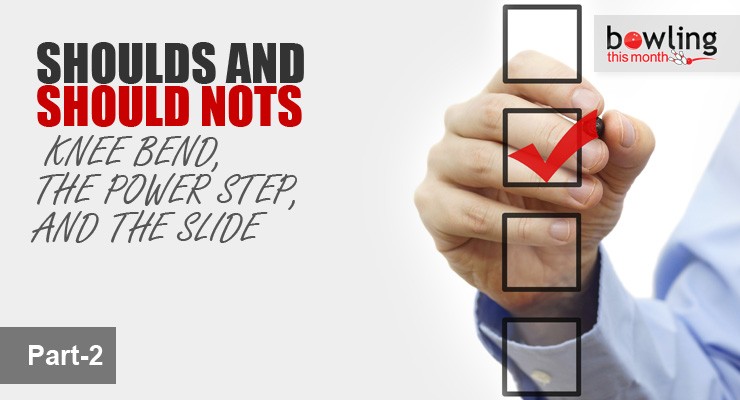Article Contents
- 1. Knee bend
- 2. Power step
- 3. Slide
- 4. Straighten up and slide right
- 5. Power players
Note: This article is only available to Bowling This Month subscribers.
Accentuate the positive. Eliminate the negative. Thanks, Johnny Mercer, for great song lyrics that apply beautifully to proper bowling execution! These two things must be done correctly to get the maximum potential in your game. In my last article, I addressed several aspects of proper execution. This month I will address the knee bend, the power step, and the slide.
Knee bend
The knee bend is an important component of the third step of a four-step approach (the fourth in a five-step approach). There is a great misconception regarding proper knee bend. I can’t tell you how many times I’ve heard someone say “bend your knee on your slide.” This may sound like constructive advice, but it is far more difficult to perform than it is to convey.
Doesn’t it seem arduous to bend your knee from an erect position with a weighted object in your hand? How can anyone descend to this level abruptly and maintain any semblance of balance? If you find it difficult to descend rapidly, you should begin your stance with a slight bend in your knees, gradually descend on the second step, and assume a sitting position on the slide step. You MUST bend the knee. Tilting the body to achieve a low position is counterproductive and will result in rearing up on the release.
A proper knee bend is the catalyst for the power step. A well-administered power step can enhance your game in many ways. It permits a low trajectory of the release and is especially effective on oily lanes. It permits the arm to extend outward instead of upward in the follow through.
In a well-executed delivery, the ball touches down on the lane like a plane landing on the runway and is seldom heard when it makes contact with the lanes. Although Walter Ray Williams and Norm Duke execute near-silent deliveries, Ryan Shafer ...
Already a premium member? Click here to log in.


